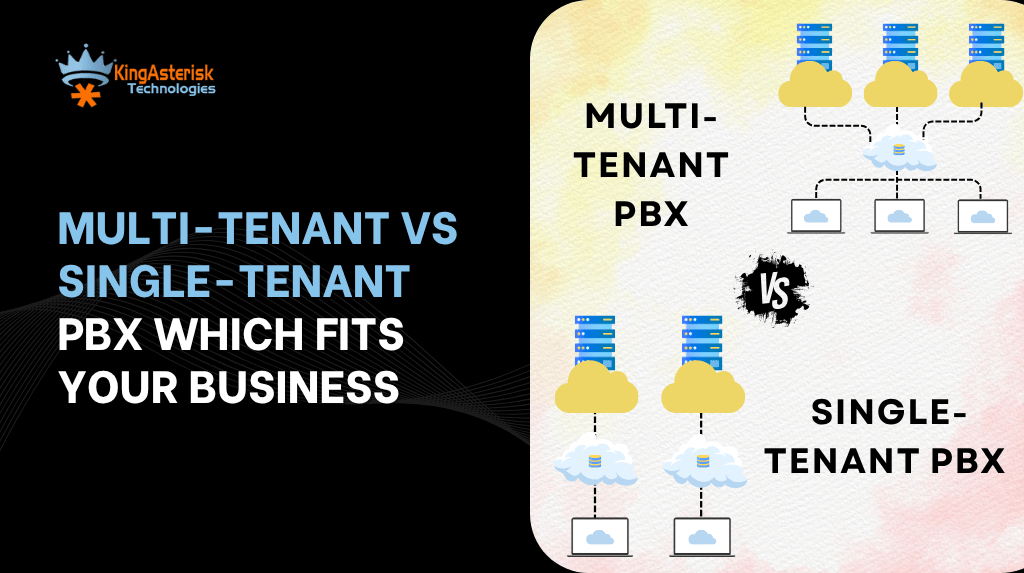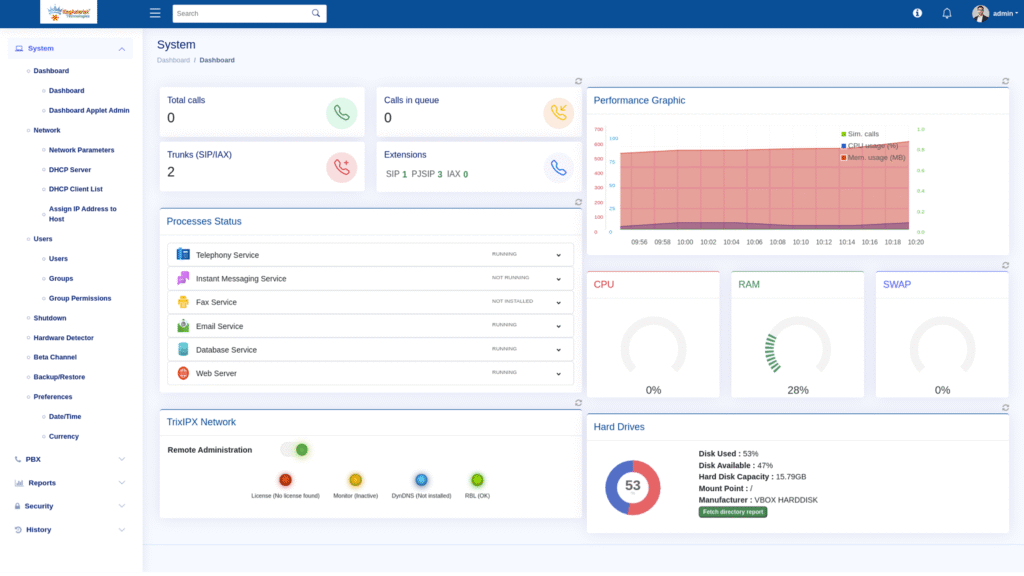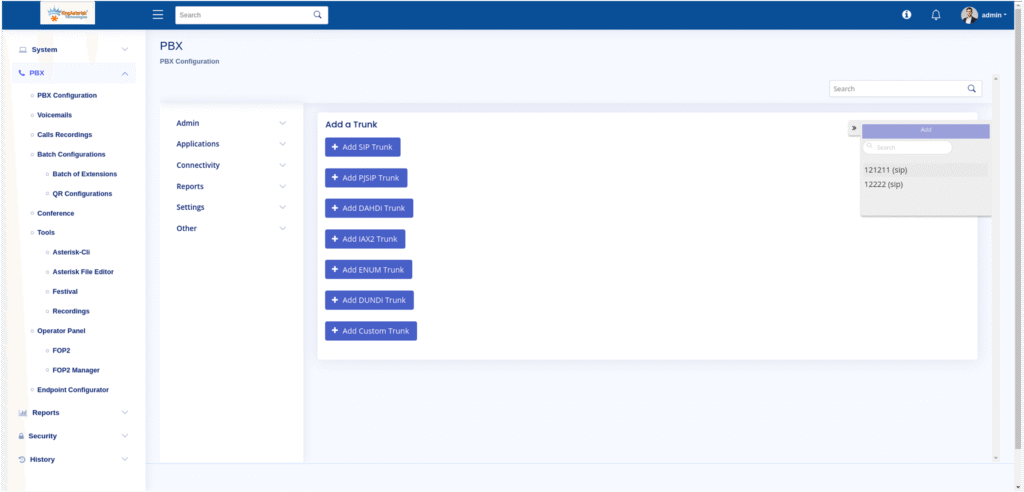
Choosing a new phone system for your contact center? You’re likely wondering what’s best: a shared Multi-Tenant PBX vs Single-Tenant PBX. That one question shapes your cost, flexibility, security, and future roadmap.
In this post, I’ll walk you through the PBX Solution key differences, benefits, and ideal use cases — with real data, opinions, and advice tailored for U.S. enterprises, SMBs, and contact centers. Along the way, I’ll drop trending keywords (cloud contact center, CCaaS, AI-driven routing, hybrid architectures) so this blog stands strong in 2025 search results.
Let’s dive in — and by the end, you’ll know which model fits your business best (and how KingAsterisk can help you deploy it smoothly).
What Are Multi-Tenant PBX and Single-Tenant PBX — Quick Comparison

Multi-Tenant PBX (aka shared-instance PBX)
A single PBX platform (in the cloud) serves multiple customers (tenants). In this shared setup, every user stays separate and secure despite using the same underlying systems, updates, and resources. Better yet, your vendor takes care of all the upkeep, sizing, and new versions.
Single-Tenant PBX (aka dedicated instance / private PBX)
Each customer gets its own instance, server(s), and database. No sharing with other customers. With a single-tenant, you get full control — but you also bear more responsibility.
Why the Debate Matters
Before choosing one, let’s stir the pot a bit. What are the trade-offs? What risk do you assume with each? You invest in a system and it can’t scale when your call volume doubles. surprise costs or vendor lock-in after going live. You fear performance hiccups, latency, or noisy neighbors in shared infrastructure. These are real concerns. And they tip the balance for many enterprise buyers.
Multi-Tenant PBX vs Single-Tenant PBX — Benefits & Ideal Use Cases

We’ll examine where each system excels, the benefits you get, and the trade-offs you make. The core distinction typically between Multi-Tenant and Single-Tenant PBX comes down to how your company handles matters of growth, data safety, and budget. These distinct PBX setups offer different perks that will define how adaptable and efficient your communication is.
Benefits of Multi-Tenant PBX
It’s the top pick for those VoIP service providers in the U.S. that don’t want to spend a fortune on equipment.
Cost Efficiency & Lower CAPEX/OPEX
Because infrastructure is shared, hosting costs typically get amortized across multiple tenants. That reduces your total cost of ownership (TCO).
Rapid Deployment & Agility
You don’t need to wait for provision servers or typically install software. Multi-tenant systems often go live in days or weeks.
Automatic Upgrades & Maintenance
The provider usually rolls out new features, bug fixes, and patches centrally. You get all the benefits without having to schedule upgrades yourself in general.
Built-in Scalability & Elasticity
As your team or call volume grows, the system can scale horizontally without gross overhauls.
Shared Innovation & Continuous Improvement
Because providers serve many customers, feature development is often faster. AI routing, analytics, and new modules arrive more quickly.
Lower Barrier for Smaller Businesses
SMBs or contact centers in smaller U.S. cities (e.g. Dayton, OH; Boise, ID) can typically adopt enterprise-grade features without enterprise budgets in general.
Benefits of Single-Tenant PBX
Perfect for large U.S. corporations and regulated industries, Single-Tenant PBX delivers stability, scalability, and the freedom to tailor every communication workflow.
Maximum Isolation & Security
Since typical instances don’t share infrastructure, you control firewalls, network segmentation, encryption, and compliance. For regulated sectors—healthcare, finance, legal—this often is non-negotiable.
Deep Customization & Flexibility
You can build bespoke workflows, custom call routing, API integrations, and tailor the system end to end.
Predictable Performance / QoS Guarantees
Without “noisy neighbors,” you can guarantee resource reservations and performance metrics.
Vendor Independence / Control
You decide upgrade timing, backup strategies, migration plans—no surprise forced upgrades.
Real Data, Trends & 2025 Insights You Should Know
Whitepapers now caution that while multi-tenant PBX is budget-friendly, it may not meet the security or scaling demands of high-growth enterprises. Some companies that migrated to multi-tenant public stacks are now migrating part of their critical workloads back to dedicated or hybrid models due to cost and latency issues.
The future is hybrid. Many smart buyers adopt a multi-tenant core for standard workloads while pushing mission-critical voice paths to single-tenant or private lanes.
🚀 Flexible Cost Models
Multi-Tenant PBX solutions, being a shared infrastructure, generally allow for lower initial investment and follow a more predictable “pay-as-you-grow” or per-user subscription model.
Conversely, Single-Tenant PBX often requires a larger upfront capital expenditure (CapEx) for dedicated hardware or a premium recurring fee for full isolation.
Our Work in ActionMulti-Tenant PBX vs Single-Tenant PBX — Ideal Use Cases (U.S. Focus)
Let’s walk through what types of organizations in the U.S. benefit from each Advanced Asterisk PBX Configuration model. (Yes, I’ll mention some U.S. state / city contexts.)
Best Fit for Multi-Tenant PBX
- Growing startups / scaleups in cities like Austin, TX or Denver, CO
- Contact centers with 50–300 agents that want to avoid heavy upfront cost
- Customer support teams in e-commerce, SaaS, travel, or retail
- Regional franchises / multi-local operations needing unified telephony
- Businesses that prioritize rapid time-to-value and want managed infrastructure
Example: A mid-sized SaaS company in Seattle wants to spin up call support and chatbot integrations. Multi-tenant PBX gives them fast deployment without requiring telecom engineers.
Best Fit for Single-Tenant PBX
- Enterprises in highly regulated industries
- Organizations with strict compliance, such as HIPAA, PCI, or FedRAMP
- Big contact centers (1,000+ agents) in major metros
- Companies that already maintain a hybrid cloud approach
- Those that demand predictable performance, SLAs, QoS guarantees
Decision Guide — Which One Should You Choose?
Choosing between Multi-Tenant PBX vs Single-Tenant PBX depends on your business size, compliance needs, and growth goals. If you want a cost-effective, scalable, and low-maintenance setup, go for a multi-tenant PBX. But if your focus is security, customization, and total control, a single-tenant PBX is the smarter long-term investment for your contact center success. Here’s a checklist + decision logic to help your team pick.
Security / Compliance Needs
If you must meet regulatory standards (HIPAA, GLBA, etc.), lean single-tenant or hybrid.
Budget and CapEx Sensitivity
Tight budgets favor multi-tenant (OPEX model), while large budgets might absorb single-tenant overhead.
Customization Requirements
If you foresee deep integrations, unique workflows, or custom plug-ins, single-tenant is safer.
Operational Maturity
Do you have internal teams to manage telecom, network, backups, DR? If not, outsource (multi-tenant) might be safer.
Performance Sensitivity
If latency, jitter, or QoS is critical, single-tenant gives you tighter control.
Suggested Paths
If you’re an SMB or mid-sized firm launching new voice operations, start with multi-tenant PBX and grow. As your volume, regulation, or complexity escalates, migrate or bifurcate into a hybrid / single-tenant architecture for your core workloads. Always test via pilot runs (e.g., a site in Phoenix, AZ) to validate performance, integration, and manageability.
Objections & Common Questions
“Will multi-tenant PBX be less secure because it’s shared?” You’re right to ask. But reputable providers isolate tenants at the logical level, use encryption, and apply strict firewalling. For many organizations, that is sufficient. If you demand full physical isolation, single-tenant is safer.
“Can I switch from multi-tenant to single-tenant later?” Yes—you can migrate. But you should plan for lift & shift of configurations, data, number migrations, and ensure minimal downtime. We at KingAsterisk help clients through that migration road.
“Is single-tenant always more expensive?” Not always. Over time, scale and optimized management may make it comparable. But upfront, single-tenant demands infrastructure and operational cost.
“Will performance degrade for multi-tenant in peak times?” It depends on provider architecture. A well-engineered multi-tenant network isolates resources. Still, in heavy usage, the provider’s underlying infrastructure becomes critical. Over time, as you scale or require stricter controls, migrating parts to single-tenant may pay off.
Does single-tenant PBX eliminate vendor lock-in? It reduces some types of lock-in (you can control upgrades, migration, backup), but you still depend on software vendors or platform support. Well-chosen platforms support portability.
Final Thoughts
If you’re weighing Multi-Tenant PBX vs Single-Tenant PBX, there’s no universal “winner.” Your ideal choice depends on your scale, security needs, customization appetite, and team capabilities.
At KingAsterisk Technology, we often guide U.S. clients through selection, pilot deployments (e.g. in Dallas, TX or Charlotte, NC), and migrations. We help you avoid pitfalls, optimize cost, and adopt next-gen features (AI routing, analytics, hybrid models).
Want a free audit or architecture review? Drop us a line. Let’s build your future-ready PBX / contact center stack — whichever model fits you best. Ready to take the next step? Contact us at KingAsterisk — we’ll map out your ideal setup, pilot deployment, and long-term roadmap.




